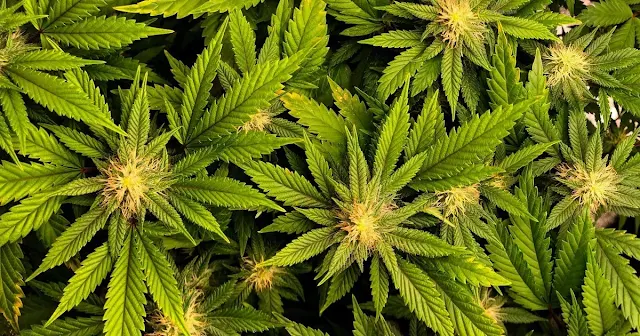Scientists have traced the original origins of cannabis to East Asia, overturning long-held beliefs that pointed to Central Asia. Using advanced DNA sequencing, researchers analyzed 110 cannabis genomes and uncovered a foundational group—“basal cannabis”—closely resembling truly wild ancestors. Their findings suggest that humans first began cultivating cannabis nearly 12,000 years ago, at the dawn of agriculture. From there, early hemp and psychoactive varieties diverged roughly 4,000 years ago. This breakthrough not only illuminates cannabis’s evolutionary journey but also reframes its storied history, shedding light on how a multipurpose plant became both a vital resource and a source of controversy.
Uncovering Cannabis’s Ancient Roots
For millennia, humans have woven cannabis into agriculture, medicine, and culture. Yet until recently, the precise location and timing of its initial domestication remained a mystery. New research, however, has cast fresh light on these questions. By sequencing the genomes of 110 cannabis samples from around the globe, scientists have identified a previously undetected lineage—dubbed “basal cannabis”—that points directly to East Asia as the cradle of cannabis cultivation.
According to new findings originally reported by The Hearty Soul, researchers employed cutting-edge DNA sequencing technology to construct phylogenetic family trees of Cannabis sativa. These trees revealed four genetically distinct groups, with basal cannabis occupying a foundational branch that split off nearly 12,000 years ago—right at the dawn of the Neolithic Revolution, when humans first transitioned from nomadic hunting and gathering to settled agriculture.
Basal cannabis, the newly recognized lineage, encompasses wild populations and traditional landrace varieties still found in parts of modern-day China. Unlike cultivated hemp and high-THC strains, basal cannabis retains genetic markers seen in truly wild progenitors. This discovery upends decades of assumptions that Central Asia held the earliest farms for cannabis. Instead, the genetic data point to East Asia—particularly regions within today’s China—as the birthplace of the first human-tended cannabis fields.
Archaeological evidence supports these genetic conclusions. Hemp-based artifacts, such as woven fibers and rudimentary cordage, began appearing in East Asian sites around 10,000 BCE. These objects underscore the plant’s use for utilitarian purposes—textiles, rope, and other industrial applications—long before psychoactive varieties gained prominence. The basal cannabis group’s genetic signatures closely match the traits needed for fiber production: sturdy stalks, low THC content, and adaptability to cooler climates. As the Neolithic era progressed, human communities refined cannabis cultivation. Around 8,000 BCE, selective breeding likely favored plants with specific attributes: dual-purpose stalks for fiber and seeds for nutritional oil, alongside emerging cannabinoid profiles. By 4,000 BCE, phylogenetic analysis shows a clear split between hemp and what would become the first true psychoactive “drug” varieties. This bifurcation marks a turning point—cannabis began to diverge into the two main branches recognized today: fiber hemp and marijuana. Archaeobotanist Dr. Guangpeng Ren commented on these developments:
“Our analysis indicates that early farmers recognized different uses for cannabis. Over thousands of years, selective breeding intensified the traits needed for rope, cloth, and psychoactive resin, leading to the distinct hemp and drug lineages we see today.”
Despite legal restrictions that have historically hampered cannabis research, this genomic study overcame obstacles by accessing living plant samples. Though limited by the absence of herbarium specimens from regions like Afghanistan and Russia, the research nevertheless provides an unprecedented glimpse into cannabis’s origin story. As global attitudes shift and more genetic material becomes accessible, future studies may refine these timelines and pinpoint exact cultivation sites within East Asia.
Global Spread and Evolution of Cannabis
Once cannabis was firmly established in East Asia as a versatile crop, it set off on a westward journey that would span continents. Archaeological records demonstrate that by 3,000 BCE, psychoactive varieties had reached India. Ancient texts from the Indian subcontinent, including references in Vedic scriptures, attest to the ritualistic and medicinal use of cannabis among early civilizations. From India, cannabis continued migrating: over the next thousand years, it made its way into the Middle East and Africa, carried by nomadic traders and expanding empires.
By the Bronze Age (circa 2000–1000 BCE), hemp fiber artifacts appear in Mesopotamian archaeological sites, indicating the plant’s integration into textile production far from its ancestral home. Meanwhile, psychoactive strains found their way into ceremonial and medicinal contexts, weaving cannabis deeper into human culture. The divergence between hemp and high-THC varieties, which began around 4,000 years ago, only accelerated during this period, driven by local cultivation practices and environmental adaptation.
Europeans encountered cannabis in the early centuries of the Common Era, though it did not become widely adopted until much later. Viking and Norse societies reportedly used hemp for rope and sails by around 800 CE. However, psychoactive use remained largely confined to Central Asia, the Middle East, and parts of Africa until trade routes expanded during medieval times.
The story of cannabis in North America has its own twists. European colonists first introduced hemp varieties to the British colonies in the 1600s, primarily for fiber production. Hemp fields flourished in Virginia and New England by the mid-17th century, woven into sails, ropes, and coarse textiles that supported colonial economies. Yet it was not until the mid-19th century, when Chinese hemp varieties replaced earlier European strains, that psychoactive cannabis began to gain a foothold in the Americas—imported by laborers and migrants on the West Coast.
Throughout the 20th century, global shifts altered cannabis’s trajectory once again. Prohibition and criminalization in many countries stifled formal research, driving marijuana use underground and leading to clandestine breeding programs. Today’s potent, high-THC strains are the product of decades of selective breeding by growers in secret. Continuous hybridization, often aimed at maximizing resin production, gave rise to the diverse array of strains sold legally (in some jurisdictions) or illicitly worldwide.
Despite this complex history, genetic analysis confirms that all modern cannabis varieties ultimately trace back to a shared ancestor in East Asia. The basal cannabis lineage’s genetic markers remain detectable in wild or feral populations across remote regions of China—testament to the plant’s wild origins. Researchers suggest that pure wild progenitors of Cannabis sativa may now be extinct, their genes absorbed or outcompeted by cultivated descendants over millennia.
Understanding this evolutionary path has practical implications. Hemp advocates point to the long-standing tradition of cannabis as a multipurpose plant—fiber, food, fuel, and medicine—arguing that modern distinctions between hemp and marijuana are socially constructed rather than scientifically clear-cut. Indeed, genomic studies reveal five hemp samples with unexpectedly high genetic diversity, challenging the notion that hemp is a single, uniform category. Similarly, genotyping of psychoactive strains uncovers multiple sub-lineages, reflecting how diverse cultural and agricultural practices shaped cannabis’s genetic landscape.
From a regulatory standpoint, these findings complicate the binary classification of hemp (low THC) versus marijuana (high THC). In many jurisdictions, legal definitions hinge on a 0.3% THC threshold—a limit rooted more in policy than genetics. The discovery of transitional strains that blur this cutoff calls for nuanced approaches to cannabis regulation, emphasizing functional characteristics over arbitrary numbers.
As lawmakers reconsider cannabis legalization, this evolutionary perspective underscores the plant’s deep-rooted significance. “Few crops have been under as much scrutiny as Cannabis sativa,” notes lead geneticist Dr. Luca Fumagalli. “By tracing its domestication history, we gain insight into both ancient human societies and modern debates on regulation, commerce, and public health.”
In conclusion, the unraveling of cannabis’s 12,000-year journey—from wild East Asian progenitors to a globally cultivated crop—reshapes our understanding of its cultural, economic, and legal significance. By discovering a basal lineage obscured until now, researchers have illuminated the plant’s evolution into hemp and psychoactive varieties, offering fresh context for modern debates on regulation and usage. As legalization movements gain traction, these insights underscore the need for informed, science-driven policies that reflect cannabis’s complex heritage. Ultimately, looking back at cannabis’s ancient birthplace helps us navigate its future, whether in medicine, industry, or recreation.
Frequently Asked Questions:
Q: Where exactly was cannabis first cultivated?
A: Genetic evidence points to East Asia—particularly regions of modern-day China—as the site of initial cannabis cultivation around 12,000 years ago.
Q: What is “basal cannabis”?
A: Basal cannabis is a foundational lineage genetically distinct from both hemp and psychoactive varieties. It closely resembles truly wild ancestors and still exists today as landrace and feral strains in parts of China.
Q: When did hemp and psychoactive cannabis diverge?
A: Researchers estimate that hemp (low-THC fiber varieties) and psychoactive “drug” cannabis split from a common ancestor about 4,000 years ago, during the Bronze Age.
Q: How did cannabis spread from East Asia to the rest of the world?
A: After originating in East Asia, cannabis traveled westward through India around 3,000 BCE, reaching the Middle East and Africa by the first millennium BCE, and Europe by the early centuries CE. Hemp arrived in North America with European colonists in the 1600s, while psychoactive strains came later via Chinese migrants and trade networks.
Q: Why is the distinction between hemp and marijuana problematic?
A: Genetic studies show that hemp and marijuana share a recent common origin and that hybrid strains can blur legal thresholds (e.g., 0.3% THC). This challenges regulatory definitions and calls for more scientifically grounded classification systems.
Q: Are true wild cannabis plants still alive today?
A: Pure wild progenitors of Cannabis sativa may be extinct. However, basal cannabis populations—feral or landrace plants—retain genetic markers of those wild ancestors and grow in remote East Asian locales.
Q: How does this discovery impact current cannabis policy debates?
A: By clarifying cannabis’s evolutionary history, this research suggests that regulation should consider genetic diversity and usage patterns rather than rigid THC-based definitions. It may influence policy on hemp cultivation, medical marijuana, and recreational use.






0 Comments